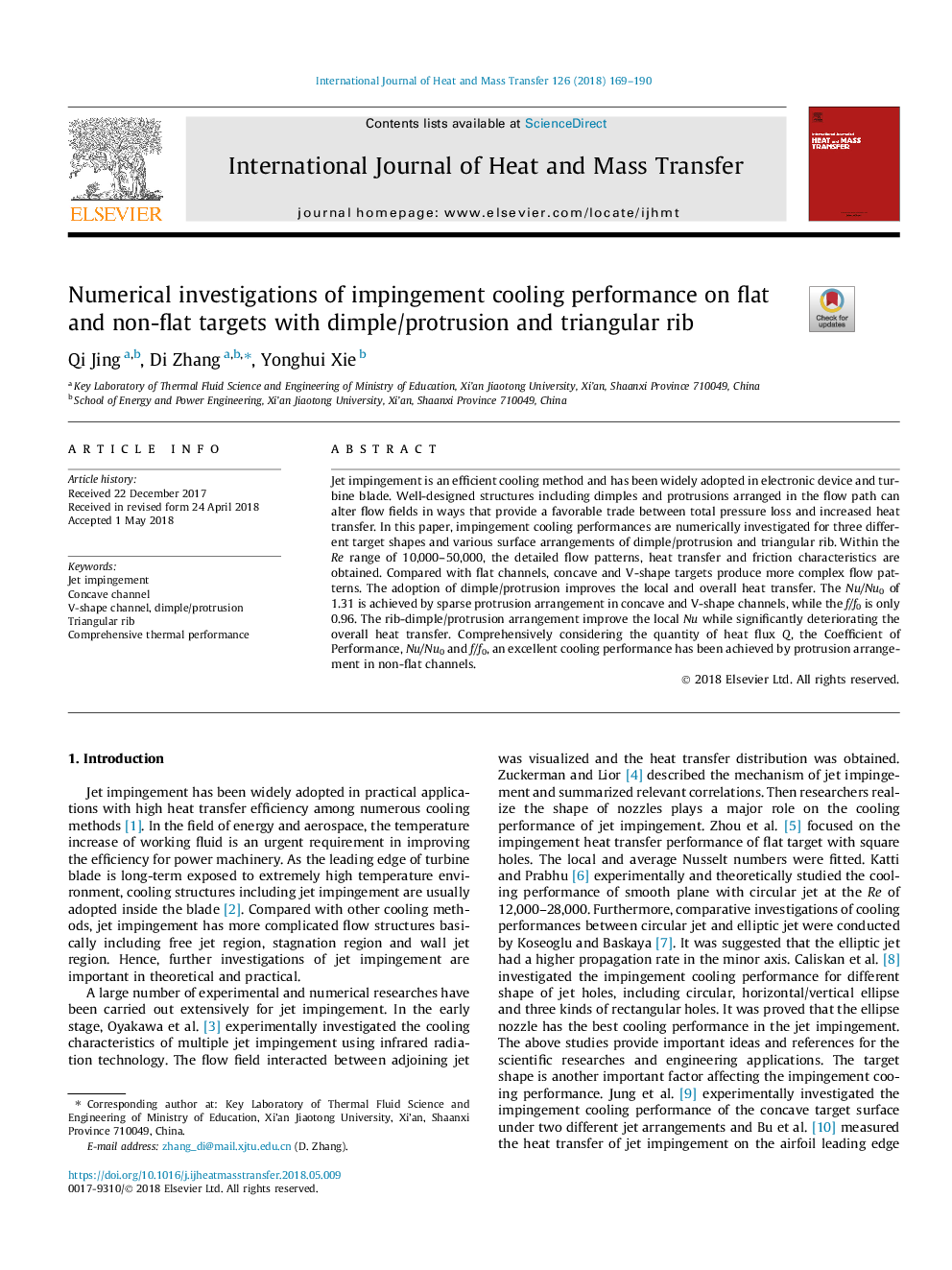| Article ID | Journal | Published Year | Pages | File Type |
|---|---|---|---|---|
| 7053962 | International Journal of Heat and Mass Transfer | 2018 | 22 Pages |
Abstract
Jet impingement is an efficient cooling method and has been widely adopted in electronic device and turbine blade. Well-designed structures including dimples and protrusions arranged in the flow path can alter flow fields in ways that provide a favorable trade between total pressure loss and increased heat transfer. In this paper, impingement cooling performances are numerically investigated for three different target shapes and various surface arrangements of dimple/protrusion and triangular rib. Within the Re range of 10,000-50,000, the detailed flow patterns, heat transfer and friction characteristics are obtained. Compared with flat channels, concave and V-shape targets produce more complex flow patterns. The adoption of dimple/protrusion improves the local and overall heat transfer. The Nu/Nu0 of 1.31 is achieved by sparse protrusion arrangement in concave and V-shape channels, while the f/f0 is only 0.96. The rib-dimple/protrusion arrangement improve the local Nu while significantly deteriorating the overall heat transfer. Comprehensively considering the quantity of heat flux Q, the Coefficient of Performance, Nu/Nu0 and f/f0, an excellent cooling performance has been achieved by protrusion arrangement in non-flat channels.
Keywords
Related Topics
Physical Sciences and Engineering
Chemical Engineering
Fluid Flow and Transfer Processes
Authors
Qi Jing, Di Zhang, Yonghui Xie,
